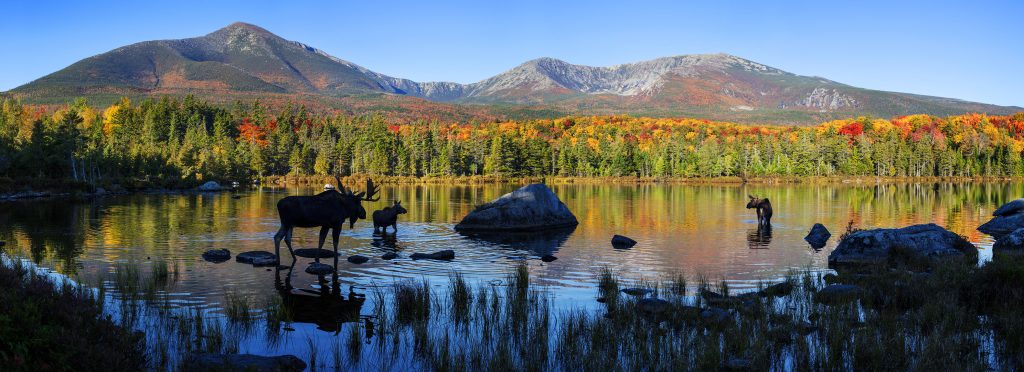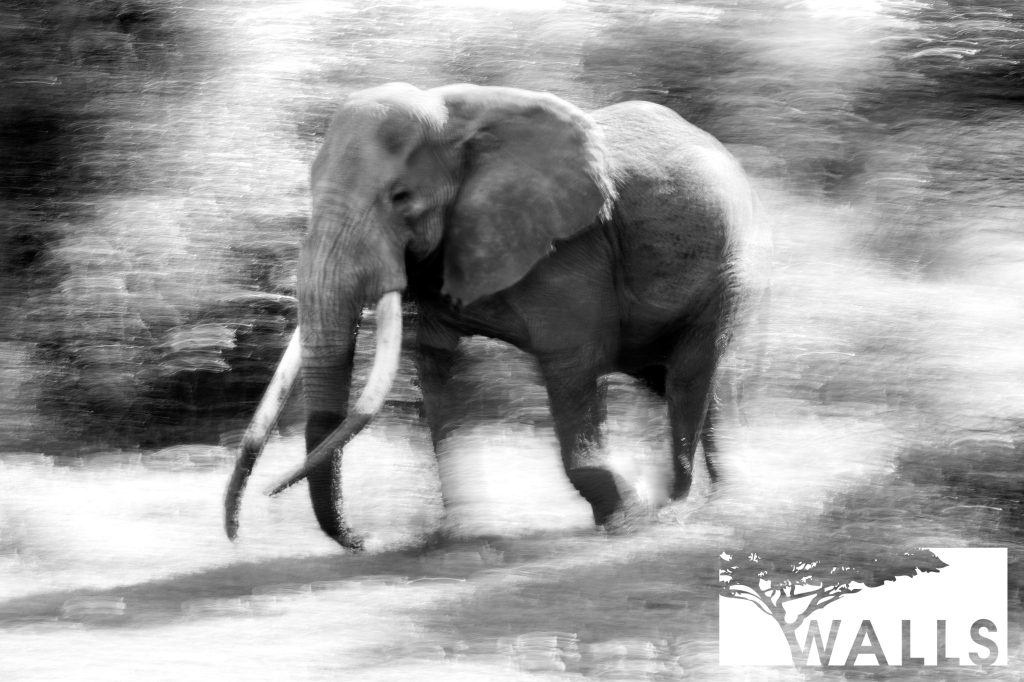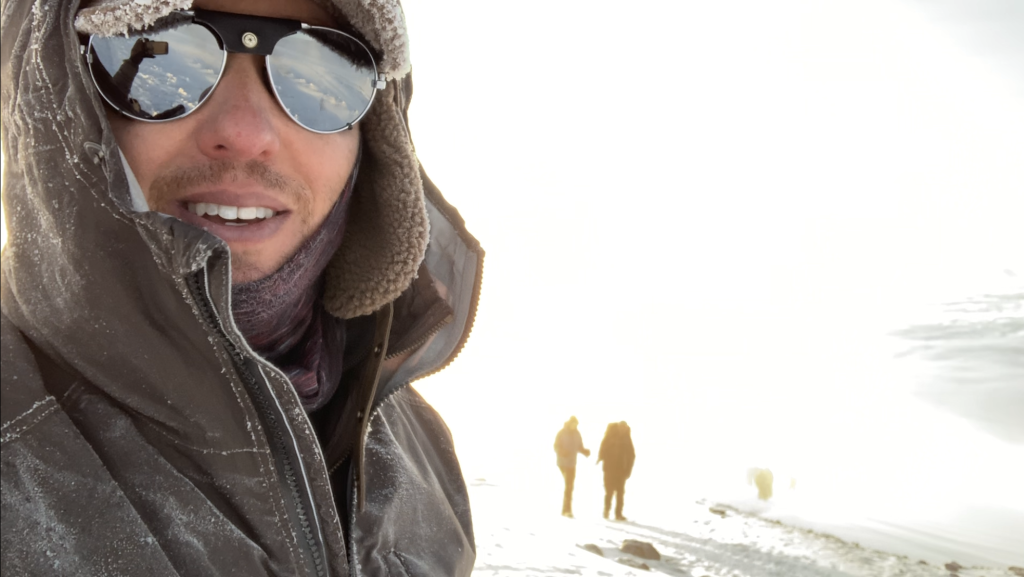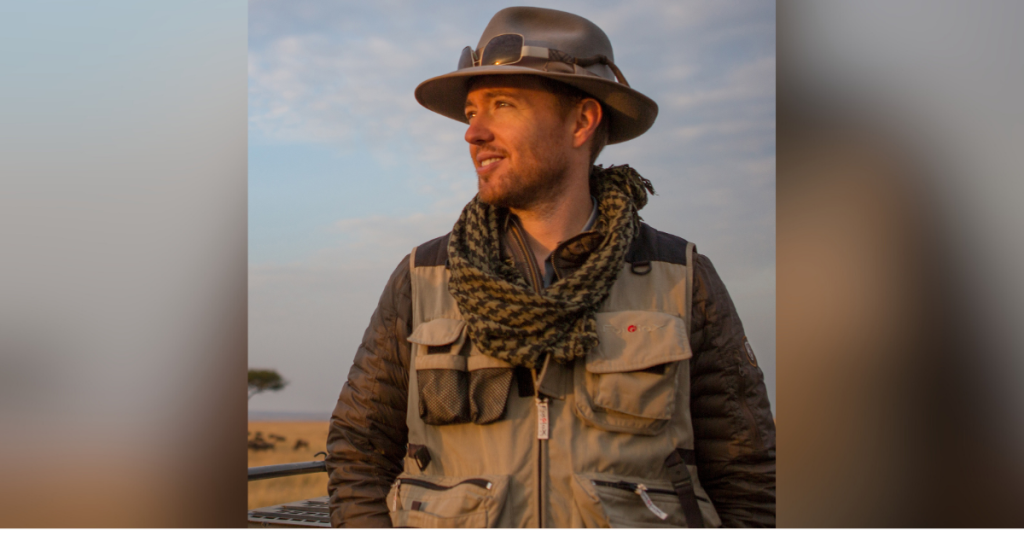Photographic Artist, Benjamin Walls, Captures the Beauty of the World on his Travels
HOW DO YOU capture a summer day? Renowned photographic artist Benjamin Walls found summer through a camera lens, shooting miles of sunflowers along the banks of the French Broad River in Asheville, North Carolina. Maybe it’s the sunflowers, in their patterned Fibonacci splendor, or the rows and rows of corn nearing maturity that serve as a fertile backdrop, or the way a light fog has settled lazily above the river after a southern afternoon shower, that in this particular photograph conjures both the simplicity and complexity of an August afternoon in Appalachia. As you look at “Summer Day”, one of Walls’ most recent pieces, your eyes will inevitably come to rest on a single sunflower, significantly taller than the rest, stretching as if to get a better view of her surroundings. And in seeing this natural anomaly, the viewer can’t help but think of the artist himself.
Artist. Entrepreneur. Conservationist. Preservationist. Philanthropist. Benjamin Walls is a self-taught photographic artist, five-time Smithsonian exhibitor, two-time Natural History Museum of London exhibitor, and winner of seven international awards. His art has been showcased around the world, but much of his extensive collection can be viewed in the Benjamin Walls Fine Art Galleries with locations in Bristol, Tennessee, and Asheville, North Carolina, which also includes his signature WALLS Wine Bar. In addition to two highly rated galleries, Walls owns WALLSabout Luxury Travel and WALLS Luxury Lofts. But all of this didn’t happen overnight, and his humble beginnings in Bristol are what not only inspired him to follow his North Star of emotionally connecting people to the natural world, but they are what continue to keep him grounded.

AT SIX YEARS old, Walls received his first camera after seeing a promotion on the back of a cereal box and mailing in the required proofs of purchase. His first photograph was taken from the top of a tree where he captured a still image of a mother dove and her nestlings. He proudly showed the picture to his mother and as he later described, “He was off to the races.”
Raised by supportive parents and a father who is an avid outdoorsman, Walls was immersed in nature from an early age. He continued to take pictures throughout high school whenever possible, frequently seeking opportunities by section hiking the nearby Appalachian and Virginia Creeper Trails, and while attending Appalachian State University, Walls would cut his entrepreneurial teeth by selling posters of his photographs out of his dorm room to fellow students. However, it was a trip to Australia and New Zealand to study abroad during his sophomore year in college that would forever change the trajectory of his life.
The inspiration and subject for one of his first and most beloved photographs, “Original Blues,” came out of that life-changing experience. During this trip, Walls hiked some of the most famous trails in the world. On his final day, after spending six months away from home and three days in the backcountry of the South Island of New Zealand, Walls found himself on a jetty in awe of his surroundings, feeling the warmth of the sunlight on his face. Overcome with emotion, he made a promise to his twenty-year-old self that he would return to that place and capture the
sentiment of the setting and experience in a photograph. A couple of years later, he made good on that promise.


AFTER GRADUATING from Appalachian State University, Walls had to make a decision: use what he’d learned earning his degree to start a travel company or follow his dream of becoming an artist. With little hesitation and no regrets, he chose the latter. But his decision came with a lot of unsolicited advice to “get a backup plan,” and parents who while supportive wondered how their adventurous, albeit talented, son could make a living taking pictures. Walls explained how a discussion with his parents only affirmed his decision, “When you go to your father and say, ‘I’m going to take photographs and present them in galleries and museums. I’m going to have my own galleries one day, and I’m going to inspire people and use that to change the world.’ And you’re the first person in your family to graduate from college – well, that’s kind of a radical thing. I’m not saying that there was not an eyebrow up, but my parents supported my vision – and the never-failing love, faith, and support of my mom has been incalculable.”
In 2003, armed with a camera and very little money, Walls left Bristol and embarked on an 18-month adventure that would span 30,000 miles, and spent fewer than five nights in a hotel. So how does a broke college graduate travel the world in pursuit of the perfect photos? Ingenuity and tenacity, patience, and perseverance. “I hit the road but, I didn’t have any money so the first thing I did was get an odd job on a cruise ship that allowed me to save money, buy cameras, and see different islands all at the same time. I worked 70-80 hours a week on the ship and took photos during my little windows of off time. Then I got a job teaching snowboarding. That way I could take photos of the Rockies and I still had a job. I then started flipping houses. There was a period of time when I’d flip a house and then take that money and go on a trip and create new work, and then try to sell that work and then I’d flip another house. There were a billion twists and turns and miscellaneous things along the way.
It’s difficult to describe how hard and inconsistent that time was. There would be a little money and I would think I can take a trip if I don’t stay anywhere and only eat on 15 dollars a day. From the time that I really earnestly started right out of college, all day every day working on this, it was seven years of beans and ramen noodles, and odd jobs and flipping houses, and living in my parent’s basement, and framing images out of my parent’s garage, and foregoing relationships… – the list is endless. It was like that not for a few years, but for the better part of a decade.”

BY THE TIME Walls was 27, two of those pieces from his time traveling after college were hanging in the Smithsonian and one at the Natural History Museum of London. Since then, Walls has traveled over a million miles capturing some of the most beautiful wild places left in the world. When asked about the location to which he feels most emotionally connected, he answered, “I tell myself that I haven’t found that place yet. That keeps me looking forward; that keeps me in adventure mode.” Walls explained that ultimately the places he feels most connected to are those to which he returns year after year “to do things that are sometimes not fun – waking up two or three hours before daylight and hiking out and sitting inside a willow bush waiting for elk to cross a river.” He described returning for six consecutive autumns to Grand Tetons National Park where he captured some of the most spectacular pieces in his collection. Titles like “Mountains of the Sky,” “Snake River Crossing,” and “Oxbow Landing,” are all reflections of his time spent mirroring the magic of those quiet moments.
His story is one that resonates with people from the region on an emotional level. In 2007, Walls was drawn to a historic building on the corner of State Street, virtually condemned, with a vision of creating luxury lofts on the second floor and a fine art gallery on the first. On the heels of a recession, most people were skeptical, but he was quick to defend his decision, “It was three years of swinging hammers in that building and getting it up to the state it is now. Everybody thought I was crazy when I purchased it – my parents included, but I’m really proud of it. It’s a great home base and it has been for 12 years. I believe that profitability and historic preservation are not mutually exclusive. In fact, historic preservation conserves resources, reduces waste, and saves money by repairing and reusing.”

WALLS OPENED the doors to his first gallery in 2010 – to a small crowd of mostly friends and family – and the manifestation of his dream would become an integral part of the revitalization of downtown Bristol. Walls’ choice to photograph the natural world is a testament to his belief in the power of place. He is frequently asked, “Why Bristol? Why is this here?” He explained, “It’s an honor to be able to do these things. I saw an opportunity in downtown Bristol, and I love where I am from. I hope it’s an example of what’s possible. I’ve always had just a wildly independent mindset, certainly not in a reckless way, but in a very thoughtful and contemplative way. My hope would be that people don’t feel quite as pigeonholed with regard to what’s possible. I’m from what a lot of people would consider a simple part of the world and I’m from a very humble family. I just see that as an advantage and an opportunity. I’m proof that you can wander your own way, go about things your own way, and with a lot of hard work, tenacity, and a little bit of luck, that can go pretty well.”
Things continue to go “pretty well” for Walls. In 2016, he published his gorgeous coffee table book Beyond for which Dolly Parton wrote the forward. It was the culmination of “12 years of work, three hundred thousand exposures, and over a million miles of travel.” The inception of the book is rooted in his deep love for Southern Appalachia and his fierce commitment to local and global preservation, with 5% of sales going directly to Friends of the Smokies, a nonprofit supporting the conservation of the Great Smoky Mountains. Walls explained what led him to approach Parton to write the forward, “I was doing an exhibit at the Tennessee State Museum called ‘Through Appalachian Eyes.’ I’m a Tennessee native, and the book starts in Appalachia and expands to subjects all over the world, much like my career had done; it told that story. I just thought to myself, ‘Who is more of a hero of mine from Tennessee, more specifically from Appalachia than Dolly Parton?’ She’s an icon. She’s a living legend. It was certainly a pinch-me day when she asked me to come down with a pop-up show of my work and announced she’d be writing the forward to the book.”
At that press conference, Parton told Walls, “I paint the Smoky Mountains with words, and you do that with your camera.”

